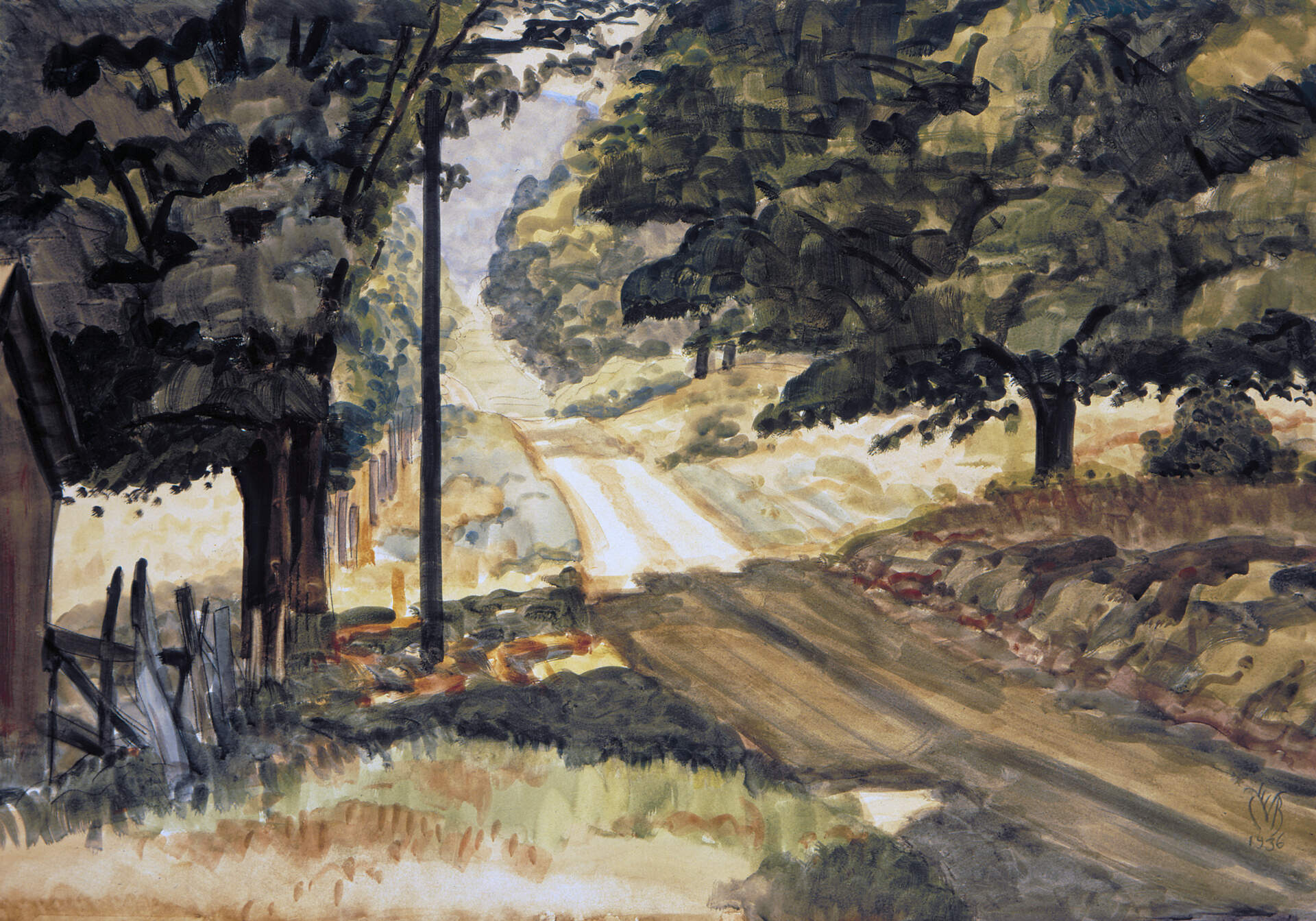Charles E. Burchfield (1893-1967)Road in Sunlight and Shadow
1936
watercolor on paper
19 x 27 inches
Gift of James T. Shaffer in Memory of his mother Daisy Shaffer, 1977
On the back of this watercolor, Burchfield wrote that the location was a country road southeast of East Aurora. A fine example of his more realistic works, Road in Sunlight and Shadow illustrates an American vista that is becoming rarer, and at the same time it focuses on the beautiful patterns of light and tree shadows, as the title suggests.
Road in Sunlight and Shadow is an example of the romantic realism that Burchfield embraced in the 1930s. However, there are reasons to believe it is not just a pretty picture of a lovely day in summer. The lilting light, rich shadows, stately trees, and evidence of human coexistence with nature represent a condensation of all that was meaningful to the artist. During the summer of 1936, after decades of vacillation, he still had conflicted feelings about believing in Christian orthodoxy. In his journal entries, he used “the road” as a metaphor for his search for the divinity that his wife and most of American society accepted. After taking his daughter Mary Alice and her friend Marie to nearby Elma for “catechism instruction” (as he did not impede his wife’s wishes to raise their children within religious parameters), he traveled down Jamison Road—the country road in this painting—where he stopped at a “little grove” and gave more thought to his ongoing debate about believing in nature versus god. Two days later, he made a simple observation that the beauty of nature is all important, and the color of the woods is what he tried to paint faithfully. As the month drew to a close, he regretted thinking that Nature did not hold all meaning for him and he rejected the accounts of biblical dogma. On July 26th, after seeing an inspirational evening sky, he found the awe-inspiring power of nature to represent the symbolic order for his sense of being and all that exists. Eight more years would pass before he decided to join his wife’s Lutheran church. — Nancy Weekly, Burchfield Scholar
Conservation treatment done in 1987 by Elisa Jorgensen, 1988
Faculty advisor Paper Conservator Cathleen A. (Cathy) Baker
